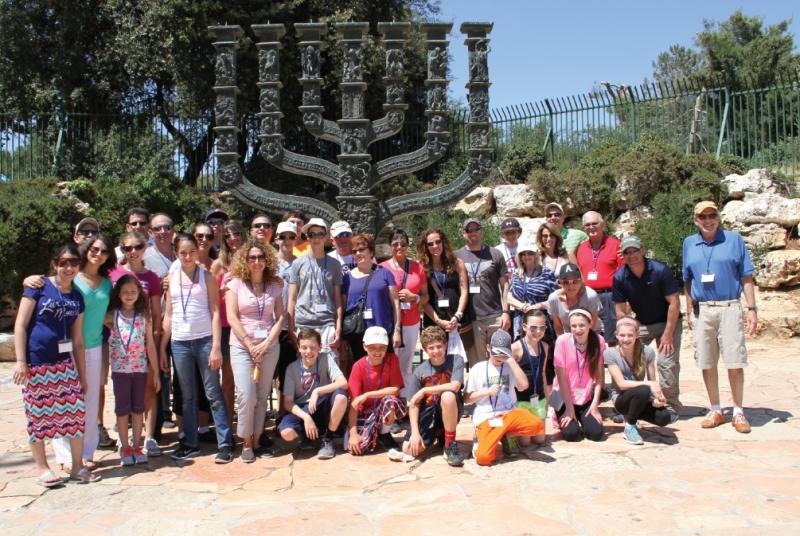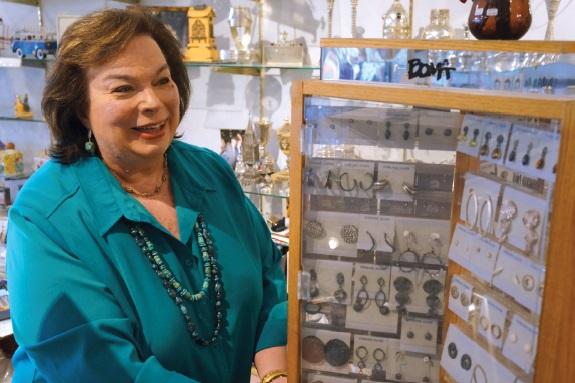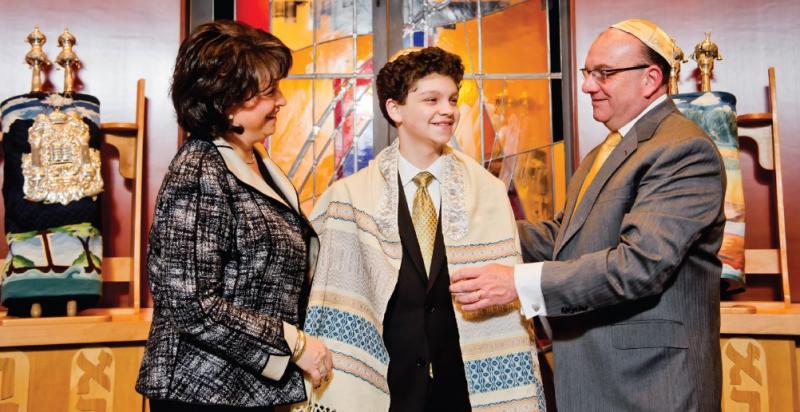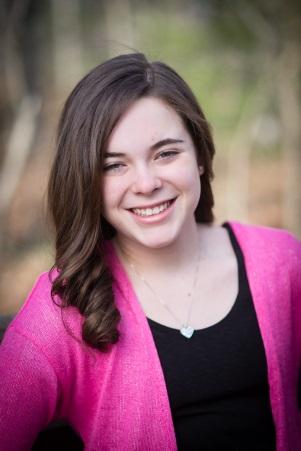![]()
The big reveal: Jessica Daninhirsch sees that her bat mitzvah video is more than just a montage of her life.
Photos by Amy Rodgers
I’d been keeping a secret from my daughter.
A colossal one.
In 2016, for a nine-month period, I had been working on a project that, had this been a CIA operation, would have been designated as highly classified, top secret and I’d-tell-you-but-then-I’d-have-to kill-you.
The project involved covert communications by email and letter, creating hidden file folders on the family computer and your basic espionage.
Finally, though, the day was here: Oct. 22, 2016. Sure, it was my daughter’s long-awaited bat mitzvah and that, of course, was a meaningful milestone. But I confess that when I woke up that day, my first thought was, “Today is the big reveal! I can’t wait for her to see the video!”
All of this subterfuge for a bat mitzvah video.
A bit of background:
My daughter, Jessica, had been training in gymnastics for several years and was on the competition circuit. It was purely for recreation — she had no intention of going into the big leagues, but she loved the sport. She knew the names of all of the Olympic gymnasts, past and present, and even the Olympic hopefuls. On a summer vacation to Colorado in 2015, we stopped at the Olympic training center in Colorado Springs and watched the men’s practice — she knew everyone, even the ones who weren’t household names yet.
When we started planning her bat mitzvah, it was a no-brainer that gymnastics would be the theme of her party; specifically, “Jessica’s Invitational.” Jessica worked alongside us to help plan and design everything from the table settings (each one represented by a different gymnast and featuring facts about them), to the welcome sign to the cake baked by my sister-in-law, replete with fondant balance beams and tiny gymnast figurines.
She also helped design the invitations: at the top, in her favorite colors, were five Jewish stars linked together, reminiscent of five linked Olympic rings, along with our logo of a gymnast balancing on elbows, legs in the air.
Individually wrapped chocolate lollypops, imprinted with an image of a gymnast in motion, served double duty as favors and table numbers.
We planned to show a video to our guests during dessert; my husband worked for months to create a sweet montage of Jessica through the years, all set to meaningful music.
Though she didn’t know it, our video was going to knock her Converse socks off.
![]()
Early in the year, I reached out to Jessica’s favorite gymnasts and asked if they could record a short video, congratulating her on her bat mitzvah, or perhaps encouraging her in her gymnastics training.
Short of cyber-stalking anyone, I researched where the gymnast trained, if they had a personal website or Facebook page, if they had an agent or a PR person, etc. I emailed some of them, either directly or through their gyms, and wrote good old-fashioned, heartfelt letters to others.
I did not expect to hear back from anyone — after all, these are busy athletes, and 2016 was a summer Olympics year — why would they take the time out of their day to record a video for a stranger?
On a cold day in January, I sent my first email out to Jake Dalton, who was on the men’s Olympic team.
Within two hours, I received a video response from him; jumping up and down alone in my house, I hoped that no neighbors would walk past my window as I processed this initial victory.
After about six months, we received 13 videos out of about three-dozen requests. We buried the videos in the computer with disguised titles.
Some of them were very sweet — Laurie Hernandez and Nia Dennis made the videos personal, incorporating facts about Jessica and things that they had in common with her.
Other responders included Jordyn Wieber, Maggie Nichols and Sam Mikulak.
When I received a video back from Gabby Douglas, I remember running upstairs to babble incoherently at my husband, who was home sick at the time, dragging him out of bed to come downstairs and see it for himself.
Other gymnasts were more difficult to reach.
Despite many requests, I never heard from Jessica’s favorite gymnast, Nastia Liukin. It’s quite possible that she pegged me as crazy lady and thought I would go away if she ignored me. I also tried my best to get in touch with Aly Raisman, our fellow Jewish gymnast, but to no avail.
Still, we had a good amount of gymnasts representing Team USA. We tacked the gymnast video on to the very end of the main video; after it ended, there was a short pause, after which you could hear the Olympic music in the background with a message that said “Wait!! Nobody Go Anywhere! A few special folks want to say a little something…”
I also tipped off my photographer in advance that this was a moment to be captured on film, and she managed to shoot some great pictures of Jessica in various stages of awe! And there may have been a few (i.e., a river) of mom tears shed that day as well.
![]() An incredible coincidence occurred the next day, making the weekend all the more memorable:
An incredible coincidence occurred the next day, making the weekend all the more memorable:
Jessica wanted to see the Kellogg’s Tour of Gymnastics Champions, which was to take place the day after her bat mitzvah, but we both agreed that it would be too much in one weekend. But about 10 days before the bat mitzvah, Jessica’s coach invited her (and several other teammates) to learn a floor routine and perform at the opening ceremony of that very event. We decided it would be a nice reward for all of that bat mitzvah prep, so Jessica left her bat mitzvah brunch early to head down the arena.
In addition to learning and performing a cool floor routine, she got to participate in a “chalk talk” with some of the participating gymnasts, including the elusive Nastia Liukin and Aly Raisman.
After the show was over, some of the gymnasts came out on the floor to sign autographs, including none other than Nastia Liukin, who signed Jessica’s book and took a selfie with her. We even met Brandon Wynn, who was one of the gymnasts that filmed a video for her.
Although two years have passed, I can still picture her face and her reaction to the video, and it never fails to get my tear ducts going. That moment, when she first saw and heard Jake Dalton saying, “Hi, Jessica, Jake Dalton here!” was absolutely priceless.
And I can use it as leverage forever.
Hilary Daninhirsch is a freelance writer in Pittsburgh.
The post My secret bat mitzvah project appeared first on Washington Jewish Week.





















